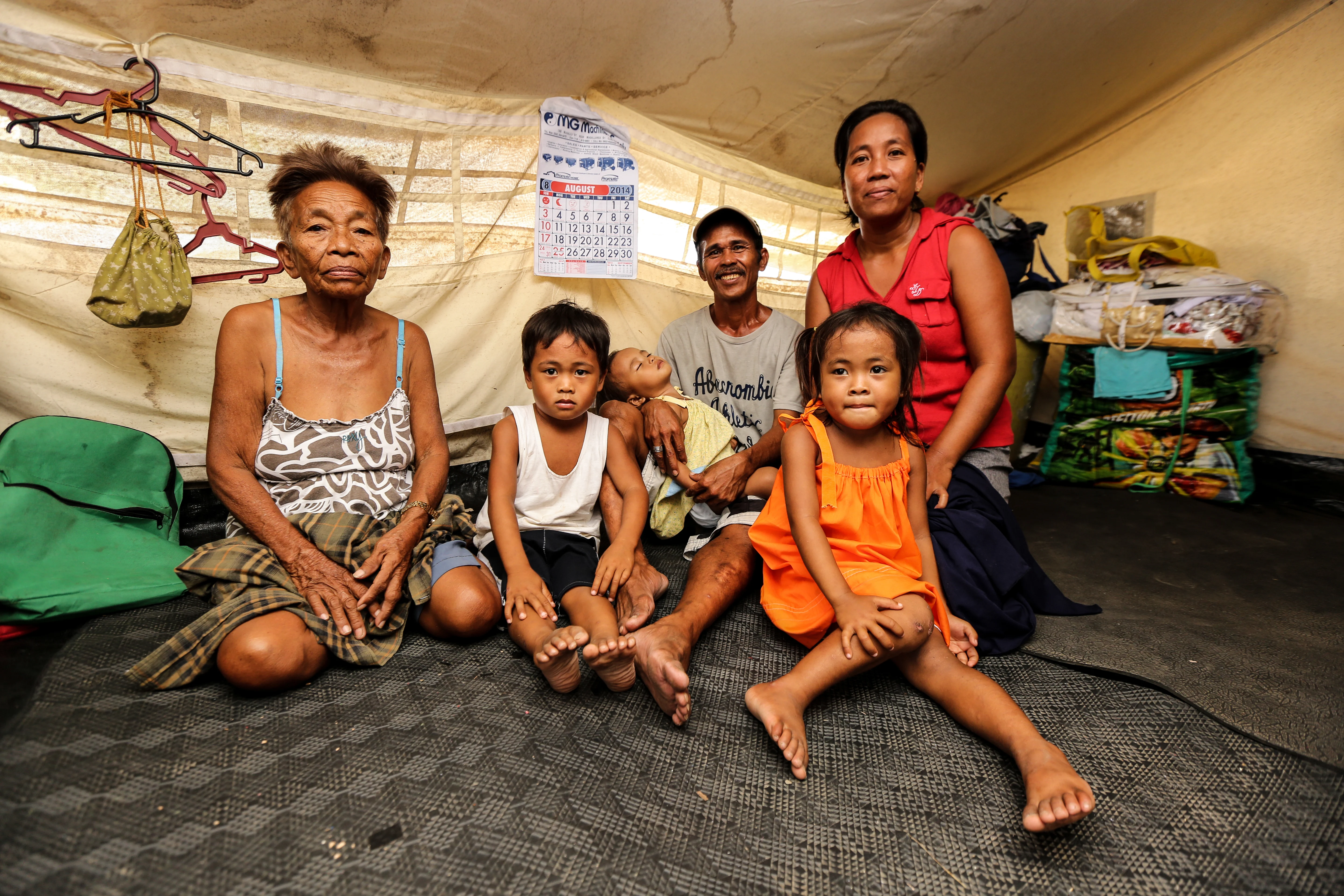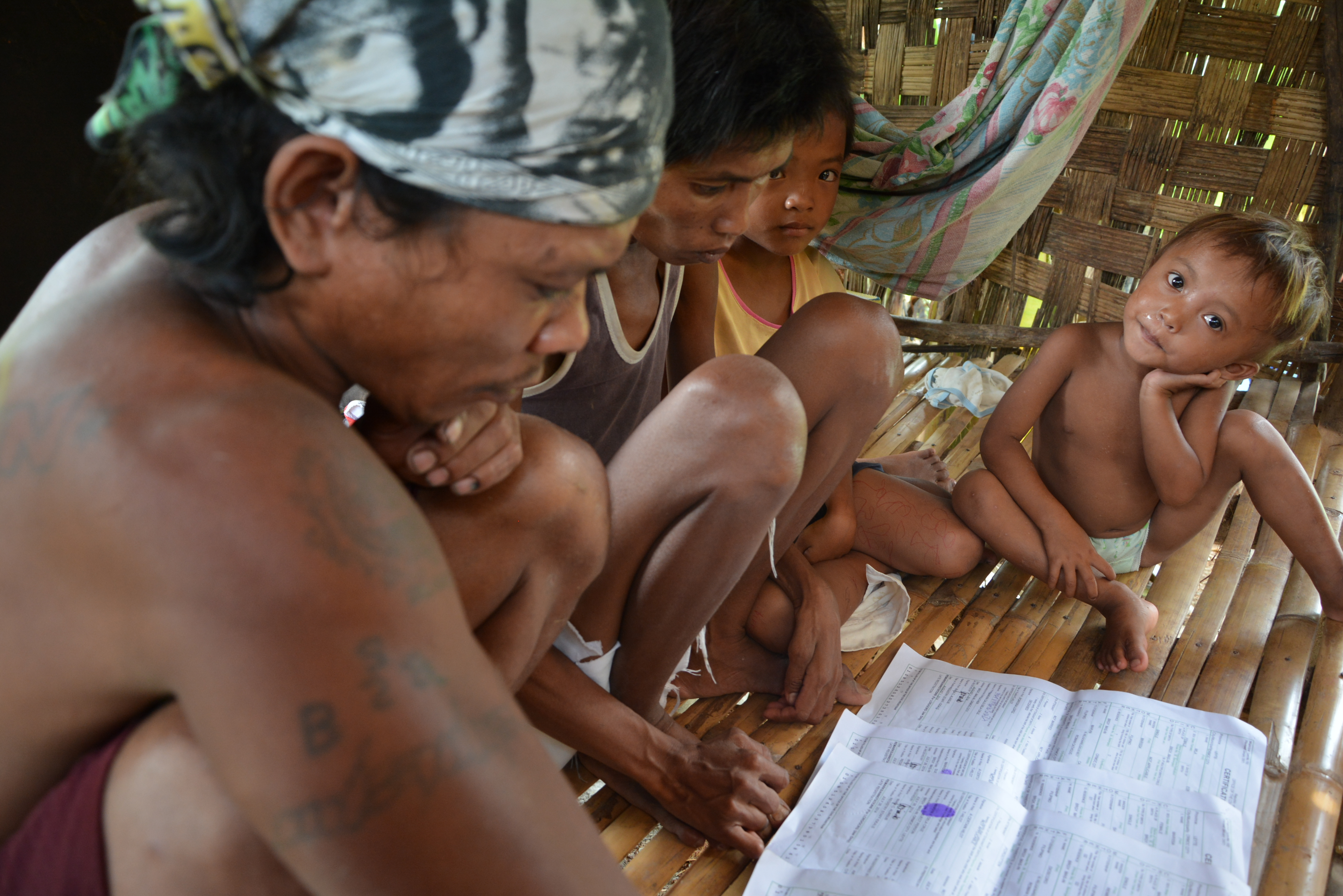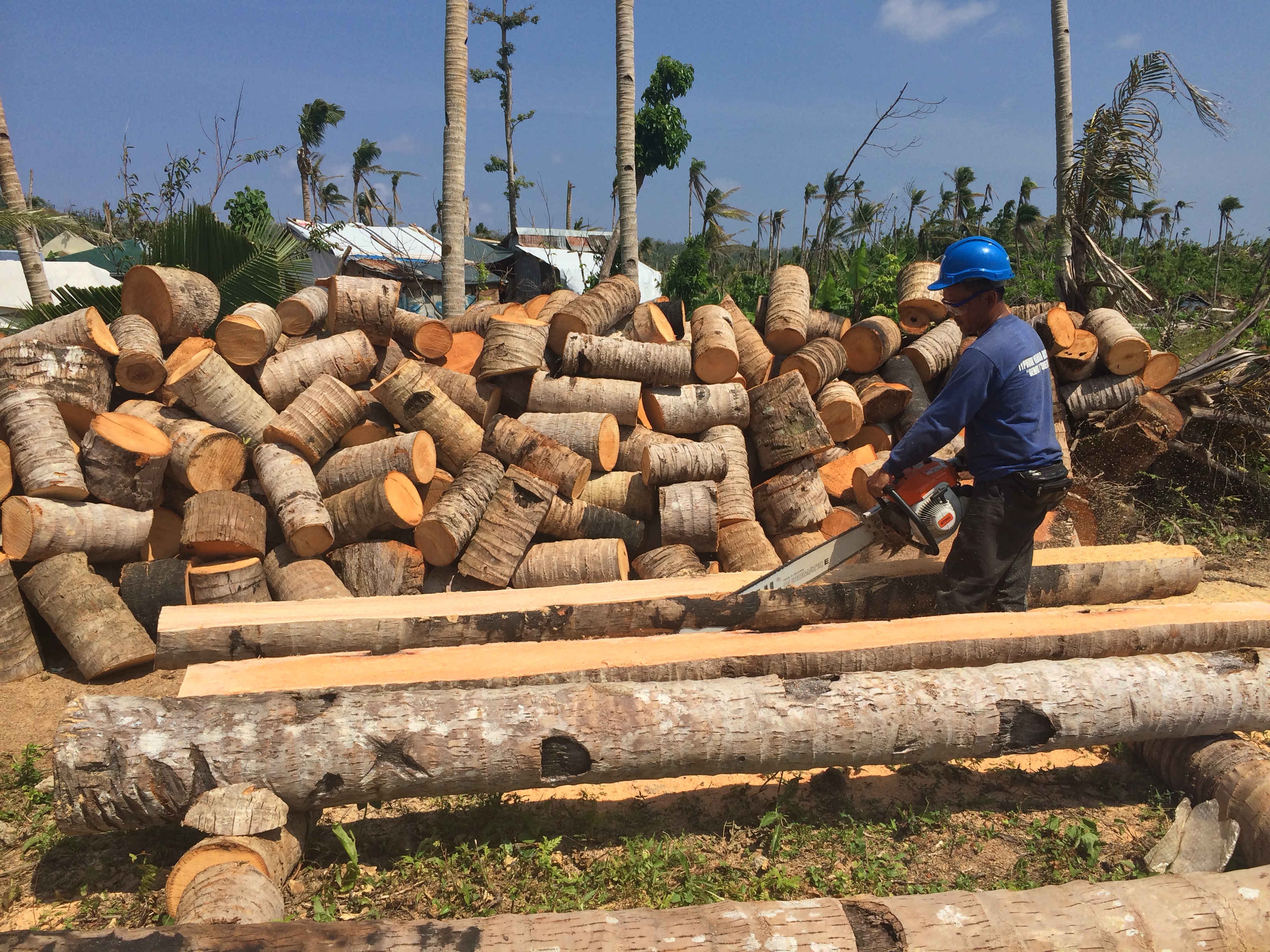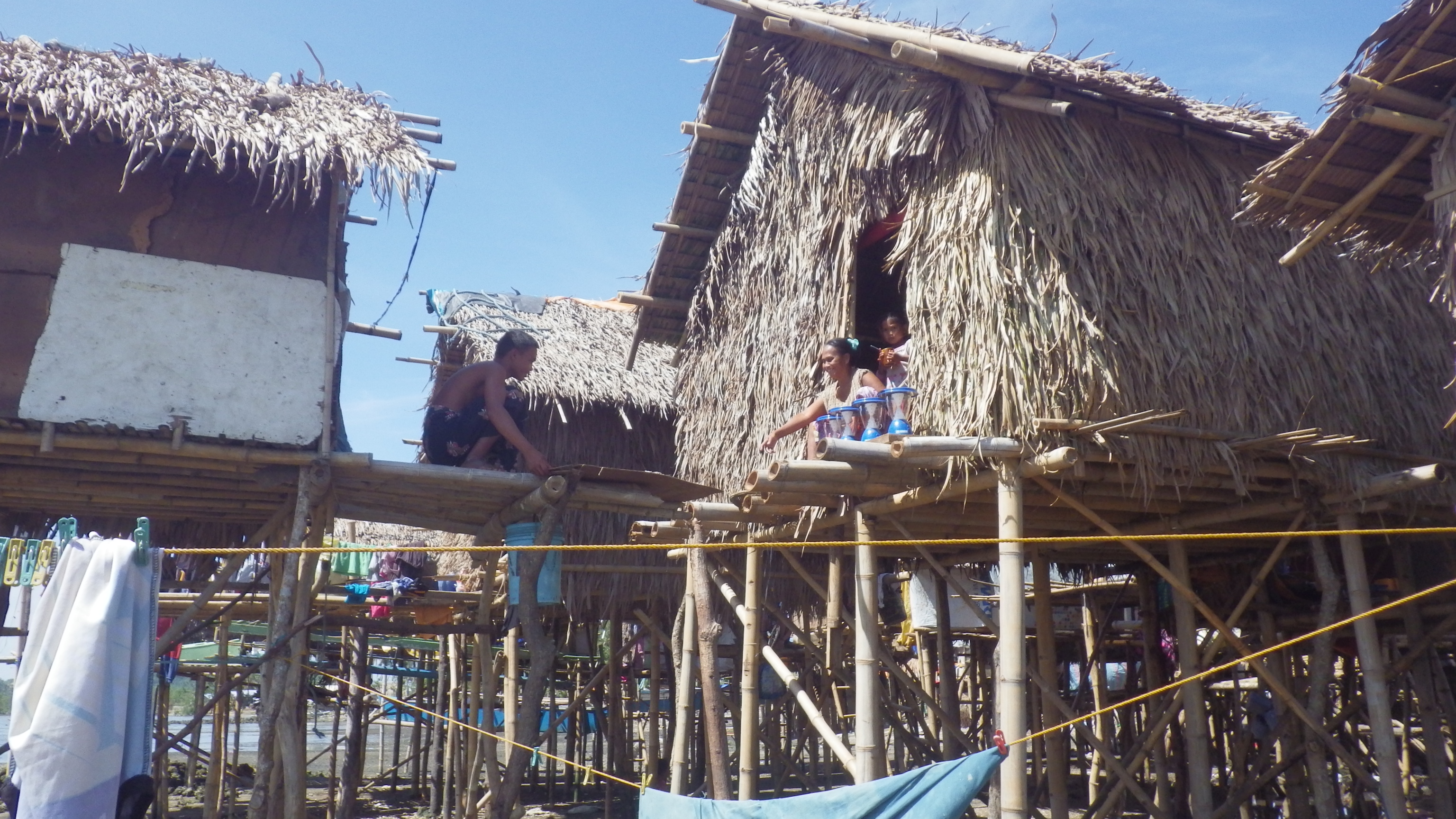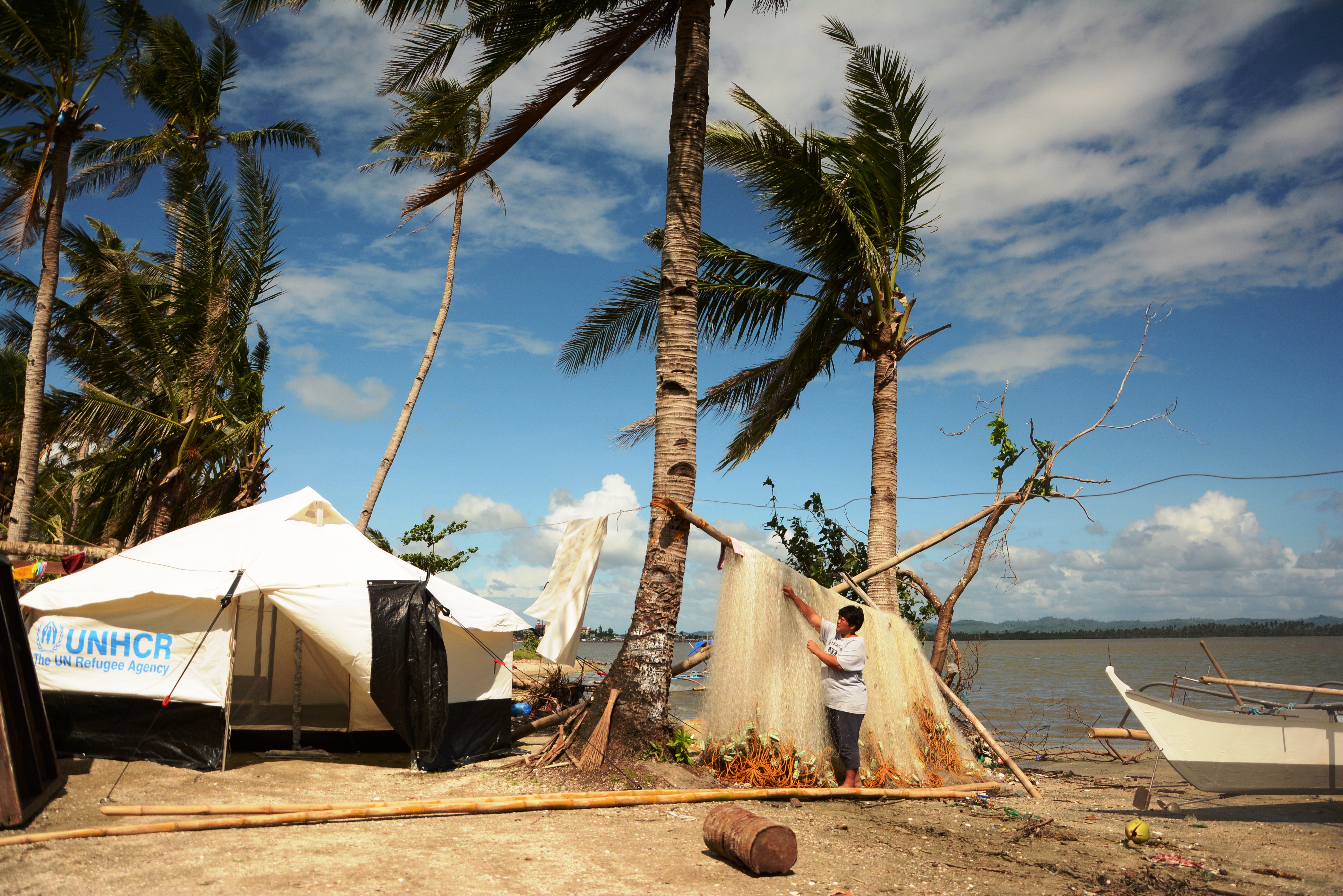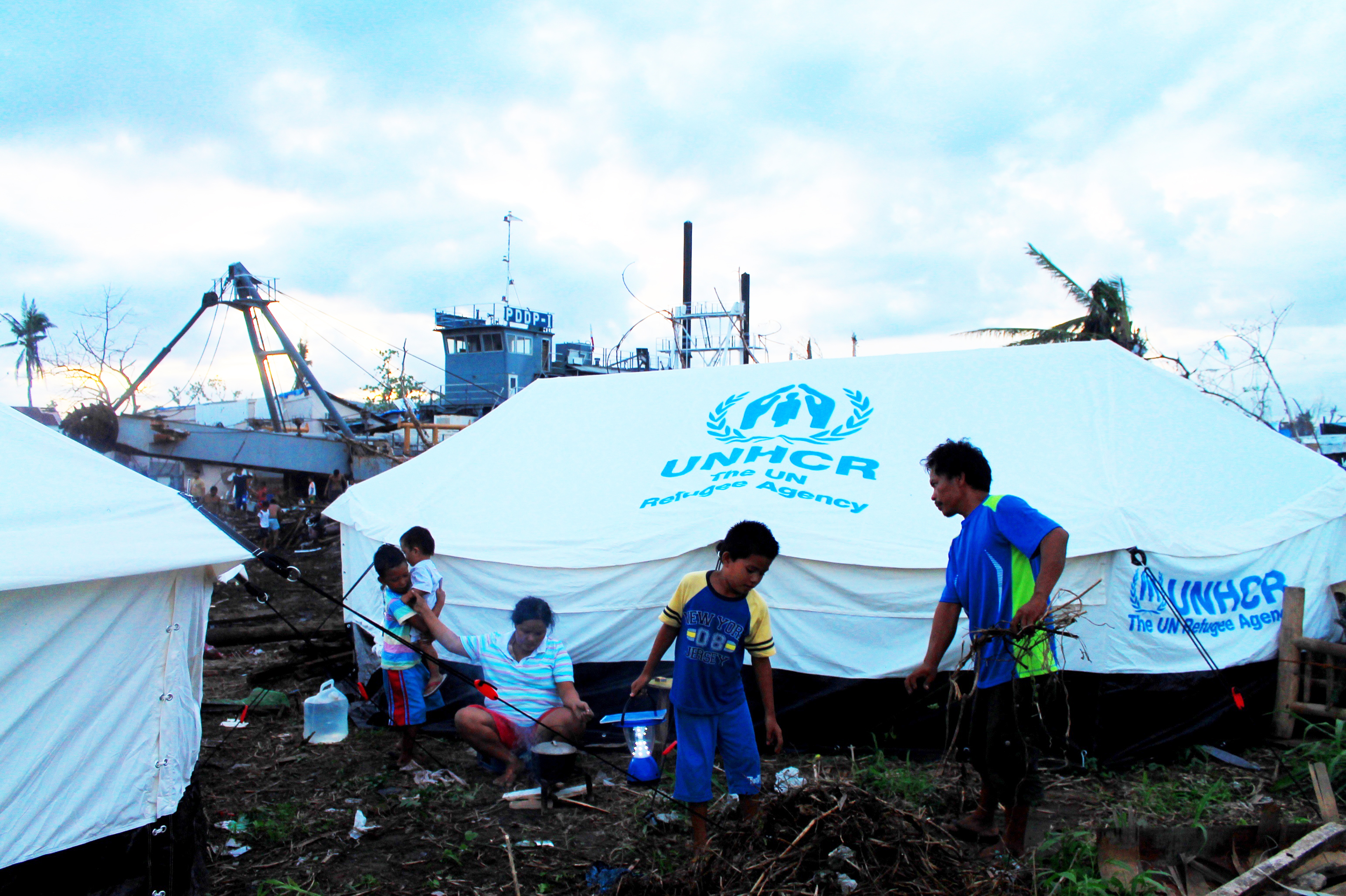Typhoon Haiyan evacuees share tales of loss, survival
Typhoon Haiyan evacuees share tales of loss, survival

CEBU, Philippines, November 15 (UNHCR) - Jane Ilagan knew something was wrong when she tasted the "salty rain." The storm surge that accompanied Typhoon Haiyan in the early hours of November 8 drenched her home with seawater and made her family flee to higher ground. Even there, the water came up to her chest.
"For seven hours until the water receded, we had to lift the kids up so they wouldn't be soaked. It was very cold and their lips were turning black," said the 33-year-old mother of one from Guiuan. The municipality is located in the central Philippines province of Eastern Samar, where the devastating typhoon first made landfall.
"Everyone who lives close to the [Guiuan] coastline is dead," Ilagan said. "I'm just happy to be alive." The UN estimates that 11.8 million people were affected by the disaster, including more than 920,000 made homeless. The government says more than 3,600 deaths had been reported as of Thursday, but the actual number was likely to be higher.
Walter Alvarez almost joined the death toll. The 23-year-old resident of Tacloban, one of the worse-hit areas, found his wife, daughter and mother-in-law's bodies after the flooding eased. Two children are still missing. He survived by holding onto a coconut tree, squeezing it so tight, he cut his arms and legs. A week later, the scabs are healing slowly.
But his heart is still raw. "I cannot stand the pain and trauma of staying in Tacloban," he said, explaining why he decided to board the C130 aid delivery flight run by the military to Cebu a few days ago.
Both Walter and Jane were among dozens at a transit centre in Cebu for people evacuated by air from the typhoon-affected areas. Here they are registered and given cooked food and clothes donated by the community. They sleep in the centre or the garden outside, and queue up for the two bathrooms available.
Some have found their own way, but many are waiting for a chance to go to the Philippines capital, Manila.
Jane said her extended family left Guiuan because the coconut trees had all collapsed. For people who rely on these trees to weave mats for a living, losing them meant losing their livelihood - and time to look elsewhere for the means to survive.
"We don't have money to go to Manila by ourselves," said Jane, who has been at the Cebu transit centre with her extended family since last Saturday. "We hope we can get a ride with a humanitarian plane going there."
Walter sighs: "I don't know how to go on alone. I plan to go to Manila and restart my life. Maybe one day when I'm better, I'll go back to Tacloban."
UNHCR is working in Cebu to coordinate the logistical supply of relief items for typhoon survivors. It is airlifting emergency tents and non-food supplies for 80,000 people. It is also planning to distribute solar-powered lamps to enhance the safety of women and children at risk. Co-leading the protection cluster with the government under the inter-agency response to this natural disaster, UNHCR also provides protection coordination and delivery, identifying the most vulnerable people and ensuring their access to basic aid and services.
By Vivian Tan in Cebu, Philippines

